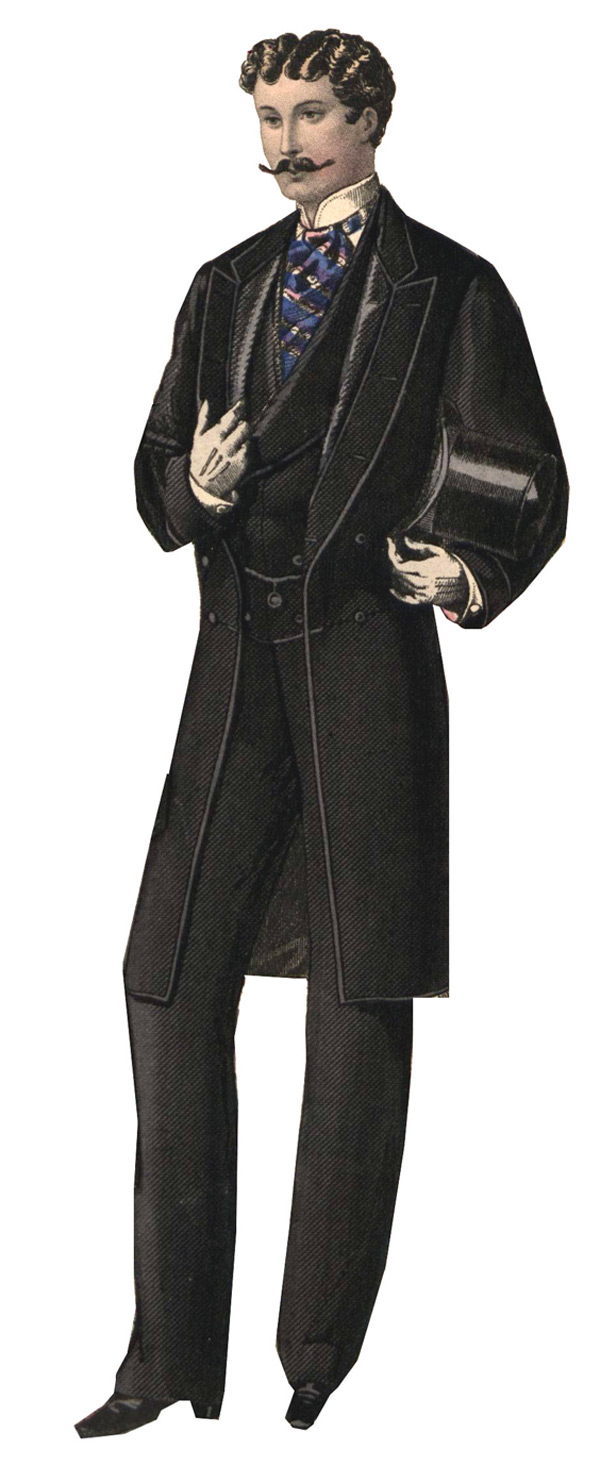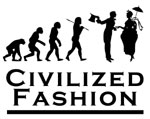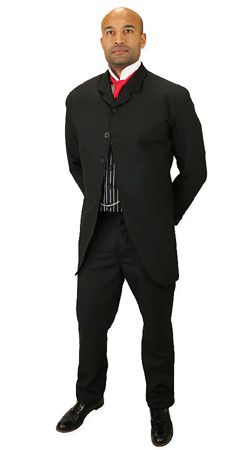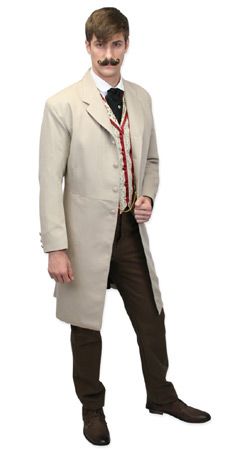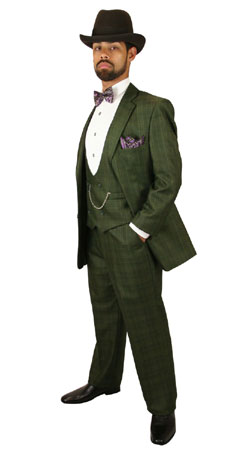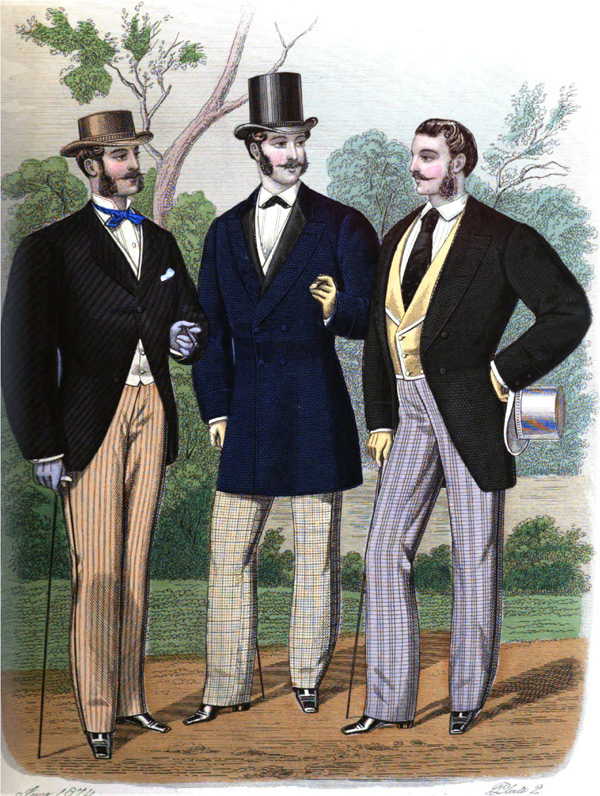Prices and Availability Subject to Change. Please call 800-997-4311 for more Information.

Mens Late Victorian Clothing (1870s - 1890s)
The Late Victorian Era was humming with activity as the Industrial Revolution hit full stride, bringing revolutionary technologies and mass-produced products to market. The manner in which people worked and lived was forever altered, mostly for the better, and these advancements included electric sewing machines in factory settings providing access to ready-to-wear fashion.
With clothing being manufactured in factories and sold via department stores and mail-order catalogue, there was no longer a need to have men's clothing expensively tailored or sewn at home. Now, nearly every man could stock a respectable wardrobe without forking over his whole paycheck - although the wealthiest gentlemen and aristocracy did continue demand custom tailored garments for superior fit and exclusivity.
Learn MoreComplete Late Victorian Outfits
We offer a full line of men's period clothing which are suitable for movie and TV production, theatrical, living history and performing arts requirements, and are also perfect for vintage weddings!
All of the products we sell are sold individually, but we have put together these full outfits to showcase the elements of late Victorian style for your consideration and inspiration.
Click any image for a close-up and a list of the products shown.

Elements of Late Victorian Style
Following Prince Albert's death in 1861, Queen Victoria plunged into mourning and wore black for the rest of her life. Her son, Prince Edward, was heir apparent but given no real political duties. As Prince of Wales, "Bertie" travelled around the world and became known as a playboy and an arbiter of fashion, bringing new styles to popularity.
As times continued to change and new social classes emerged, fashion and proper comportment was of the upmost importance to those climbing up through the middle classes. Displaying wealth through clothing and possessions showed that one had arrived in society.
Coats - The frock coat, with its slim fit, seamed waist and narrow "skirt" falling to mid to low thigh continued to be a standard "uniform" for more formal daywear, and was mostly found in black, gray and other darks. However, as the era progressed, the shorter, less structured sack coat stepped onto the scene, appropriate for appointments and casual social calls. Sack coats were often spotted in a variety of plaids, checks and tweed and were a way for a man to mix things up a bit. However, the cutaway experienced a revival in the late 1880s and once again became the coat of choice for day wear by businessmen and gentleman.
For formal events, the distinctive tailcoat was still the benchmark for elegance and good breeding, but the daring debut of the Tuxedo Coat caused quite a shakeup in high society style. Although the origin is disputed by some, the romantic story recalls the Tuxedo Coat first being seen in 1886 at the Autumn Ball in Tuxedo Park, NY. A group of dashing young men arrived in dinner jackets and bright red satin vests rather than tailcoats and white vests, and thusly a new fashion trend began.
Vests - Commonly called waistcoats, the vest remained a staple of the male wardrobe for all classes - shirts were basically considered undergarments and a man dared not be seen in "bare shirtsleeves" by anyone other than his wife or close family. For business and conservative affairs, vest frequently matched the dark color of the coat. However, men of affluence and bon vivants would often don colorful silk, brocade and embroidered vests made from imported fabrics. Even farmers, railroad workers and hired hands wore practical vests made of denims and heavy twills as they went about their business.
Shirts -During the late Victorian era, strides in manufacturing and distribution brought ready-to-wear to the public. While a gentleman could pick up a new shirt quite affordably, it was still quite an ordeal to have it laundered frequently. Detachable white collars and cuffs became affordable for the middle class, and a proper gentleman would stock his wardrobe with at least six collars and sets of cuffs to last a full year. These cuffs and collars were the only part of a shirt that really showed, thus keeping a neat and tidy appearance - and the remainder of the dirty shirt hidden from public scrutiny until laundry day.
Though plain white shirts were the standard, men also enjoyed patterned and bright shirts to offset the starched white collars and cuffs. Collar styles varied from simple fold down to wing tip to rounded banker collars and high stand collars and a man could swap out on his shirts, as desired. Flannel shirts were only for country wear and typically featured a half-placket with collar-band.
Trousers - Black was the basic color for trousers, but light colored or patterned pants were also gaining a leg up. As the modern-day zipper wasn't yet invented, pants featured button flies and suspender rivets as belts did not gain popularity until the 1920s. For rugged, outdoor endeavors, such as hunting, woolen breeches were worn and knickers were appropriate for sporting events. The biggest innovation in trousers came in 1873 when Levi Strauss offered blue jeans to prospectors in San Francisco.
Hats - Tall black top hats continue to be required for evening occasions, but beyond that many different hat styles are available. Derby hats remained popular while the stiff Homburg found favor during the 1880s among gentlemen and businessmen. A straw boater hat with grosgrain band might be spotted on a gentleman during warm weather months.
Ties - Bowties were popular during the late Victorian era, but the "four in hand" and ascot both gained popularity as the decade progressed. Other types of ties including the English square, silk puff and silk imperial were fancied for their availability in abundant designs and patterns, and "Teck" Ties, with their convenient pre-tied straps, also gained favor. Men's fashion was quite a bit less ornate than that of female counterparts; however, neckwear was an accepted way to express a bit of sartorial style.
As Victoria's reign ended and Edward ascended to the throne, men's fashion began to reflect his style even more. His preference for tweedy Norfolk jackets and Homburg hats figure prominently in men's fashion at the turn of the century. Visit our Edwardian Style Guide for more on turn-of-the-century styles.
Shop Complete Outfits Return to Top